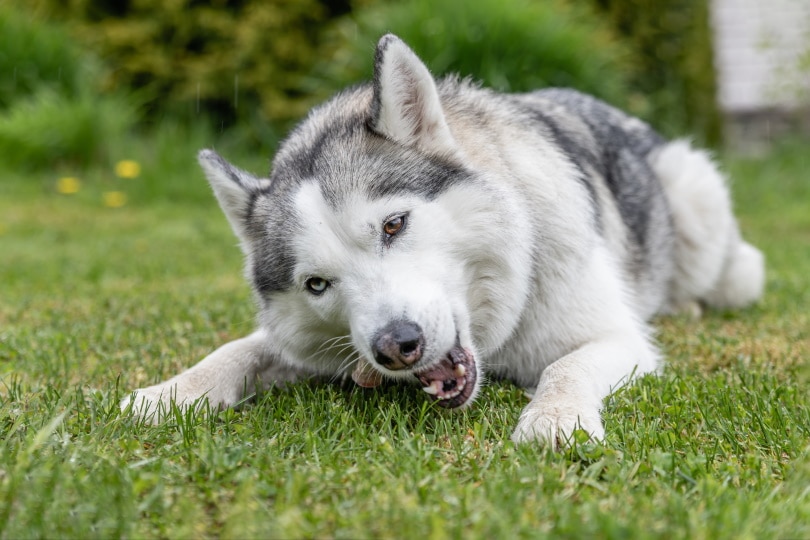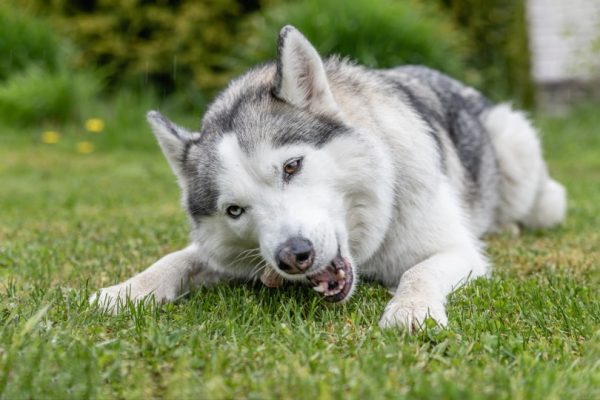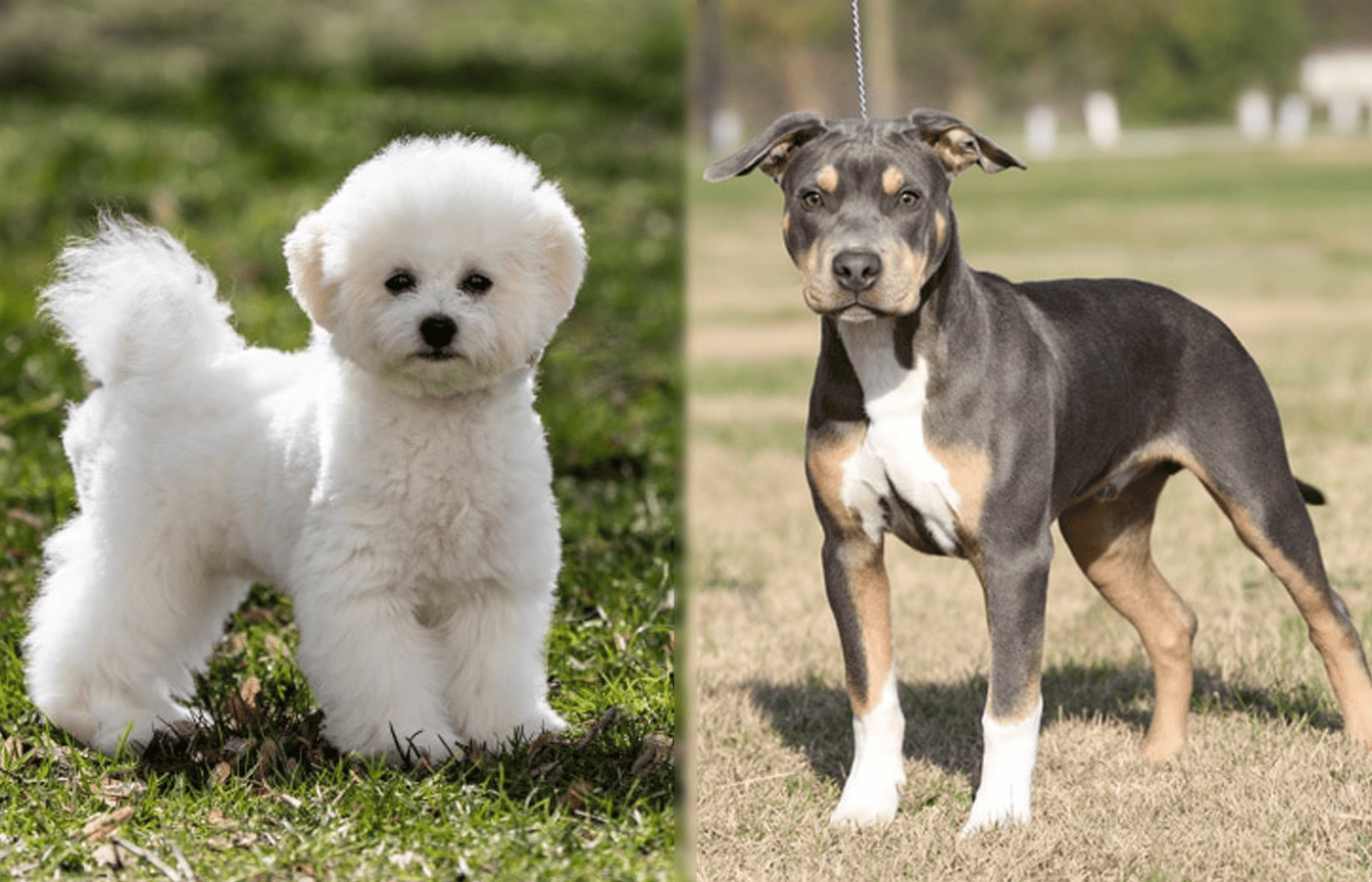A Husky has a pretty powerful bite force at 320 pounds per square inch (PSI). The Husky has one of the most similar physiques to the dog’s ancestor, the wolf, and they’ve maintained the wolf’s tremendous bite force.
Though 320 PSI may sound like an immense bite force, it is not as scary as it may first seem. The answer lies in the physics of force exerted and stress exerted.
PSI and Stress Explained
Force equals mass divided by area. This is the base formula to determine the pressure force of an impact or weight bearing. We can estimate the force needed to break through most objects though the actual force will vary based on many factors in the impact, including the shape of the objects, where on the objects the impact occurs, and the amount of time the pressure is applied.
This calculation is reductive, though, since it only applies the force of impact and doesn’t consider the size and shape of the impact. You have probably seen the magic trick where someone walks or sits on a bed of nails. This is achieved by distributing the body’s weight over the tips of hundreds of pins, allowing the collective number of nails to support the body’s weight without harm.
This works in reverse as well. We can use a glass-breaking hammer to explain. These hammers are used to break a glass by reducing the impact size, the opposite of reclining on a bed of nails. The stress of the pressure exerted can be measured with force divided by the area of contact.

An adult human punch can exert a force of about 150 PSI without any training. It doesn’t seem like it would even come close to the force needed to break a window, an estimated 6,000 PSI for annealed glass or 24,000 PSI for tempered glass. Additionally, the fist and the glass will compress on impact, reducing the actual force exerted against the glass.
However, by using a glass breaker, we concentrate the entire force of the swing of the arm into the tapered tip of the “hammer.” Since the hammer is made of steel, it won’t compress on contact. The contact area is also reduced to a minuscule size, increasing the stress on the glass enough to break through the glass with the force of a human punch.
Applying 320 PSI: What Does That Actually Mean?
The best way to measure a Husky’s bite force is to compare it to other animals. We could compare it to objects broken, but as described above, that’s pretty reductive. So instead, we’ll compare it to other animals attempting to exert the same type of force
Humans have an average bite force of 120 PSI. Huskies are significantly stronger than humans, but knowing that you can bite with over 100 PSI probably puts the number in better perspective. A German Shepherd Dog will average about 230 PSI. The dog with the greatest recorded bite force is the Anatolian Shepherd with 738 PSI.
When we go into wild animals, we start to see the huge, scary numbers. A hippo can bite down with a bite force of 1,800 PSI. Hyenas, lions, and tigers generate about 1,000 PSI of pressure with their bite. The strongest bite force in the animal kingdom is the saltwater crocodile, clocking in at about 3,700 PSI.

Final Thoughts
Will a Husky’s bite hurt? Absolutely! But that whopping 320 PSI bite force is going to be distributed through the entire surface of the mouth and whatever they’re biting. There are also calculations like the angle of impact that aren’t being represented by the PSI number.
So, really, this number is just an interesting factoid and doesn’t represent actual-world applications.
Related read:
- How Strong Is a Doberman’s Bite Force? (PSI Measure & Facts)
- How Strong Is a Wolf’s Bite Force? (PSI Measure & How It Compares to a Dog)
Featured Image Credit: Tatyana Dragunova, Shutterstock










